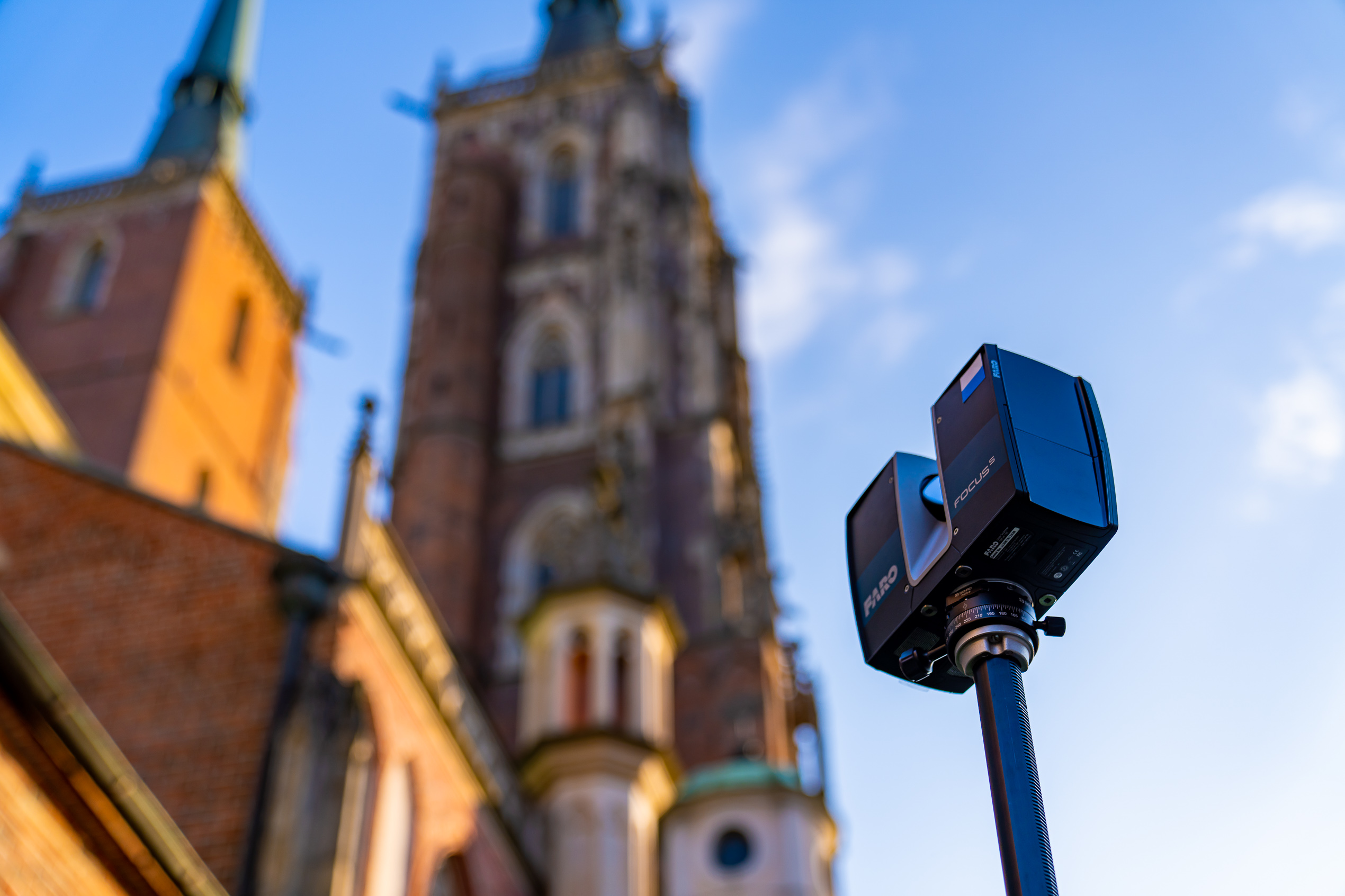3D laser scanning
)
Laser scanning is the process of capturing precise, three-dimensional information from the environment, using a laser as a light source. The reflected laser light from the object being scanned creates a point cloud in the form of millions of precisely measured points in three-dimensional XYZ space, which determine the position of the object in the surrounding space. Some laser scanners allow the model to be taken as a point cloud, while others automatically convert it into a triangulation grid, which can then be converted into a CAD model or a full-colour 3D model if texture recording is supported.
Depending on the application, 3D laser scanners can exist as standalone devices – portable, handheld or stationary and tripod-mounted – or as part of more complex solutions such as robotic arms, mobile or aerial laser scanning systems. On the technological side, laser scanners based on time-of-flight, phase shift and triangulation are available.
The first type of laser scanner typically used for long-distance data acquisition is the Time of Flight (TOF) scanner. Such 3D scanners work on the same principle as simple laser rangefinders: a laser pulse is sent towards an object, where part of the pulse is reflected off the object’s surface and returns to the scanner. The distance to the object is calculated based on the pulse’s transit time. This distance is then used to calculate a coordinate for the tiny part of the surface hit by the laser beam. This technology is used in long-range laser scanners mounted on tripods or on land or air vehicles, for projects requiring information from vast or inaccessible areas.
Phase-shifted 3D scanners, on the other hand, emit laser light at varying frequencies and determine the distance to an object by measuring the phase difference between the emitted and reflected signals. Unlike time-of-flight scanners, phase-shifted scanners operate over shorter distances from 70 to 150 metres maximum, with an optimum operating range of 1 to 50 metres.
Phase shift 3D scanners are often ranked among the fastest laser scanners, with some manufacturers claiming capture rates of more than one million points per second for their scanners. They also have higher accuracy and resolution than TOF scanners. Like TOF scanners, they include an internal or external colour capture function. It is this type of scanner that is successfully used by our foundation for the three-dimensional digitisation of secular and sacred architectural monuments, where a measurement precision of 1-2 mm at a distance of 10 metres is required.